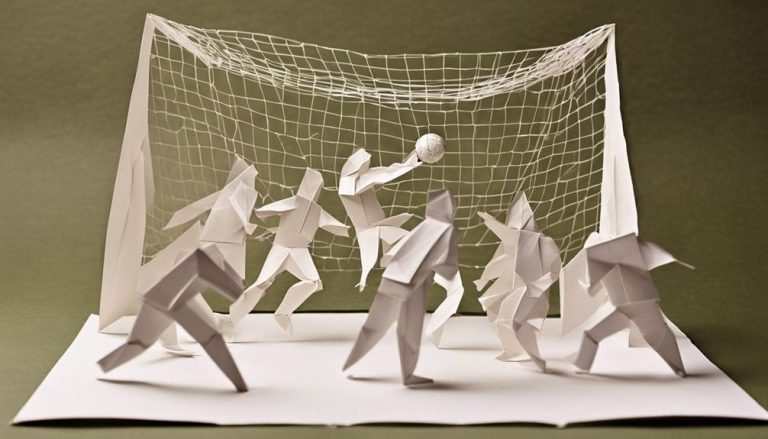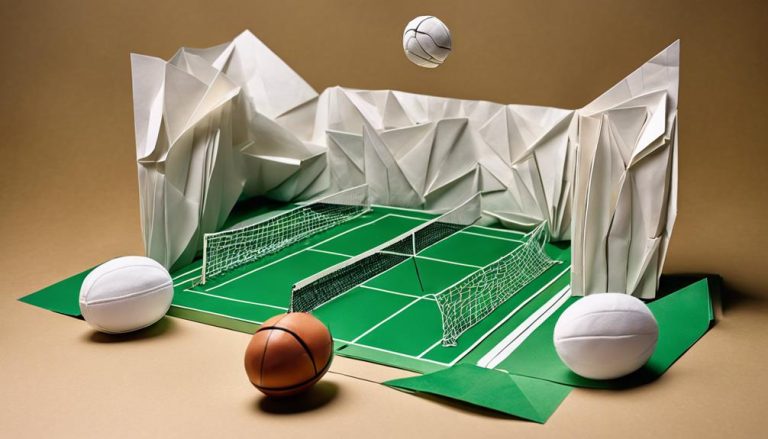General Rules of Wheelchair Basketball
Wheelchair basketball deserves more mainstream enthusiasm for its thrilling blend of skill, grit, and inclusivity. Teams battle to out-maneuver opponents and score points. The athleticism, speed, and physicality make for an exhilarating spectator event. By understanding classifications, rules, roles, and techniques, anyone can gain an appreciation for this exceptional adaptive sport.
This article covers wheelchair basketball basics to showcase why it warrants more public attention. We’ll explain wheelchair classes, equipment, player positions, gameplay formats, and rules. The skills and strategies involved provide new perspectives. Once aware of classifications, court positions, techniques, and regulations, the talent, teamwork, and competitiveness shine through. Wheelchair basketball has earned recognition as more than just recreation. Let’s begin by looking at the wheelchair sport classes used in competitions.
Court Size
When it comes to court size, you’ll need to abide by certain regulations. Wheelchair basketball courts must abide by the same dimensions as those of a traditional basketball court. The court is usually 28 meters long by 15 meters wide, with a free-throw line that’s 4.9 meters from the backboard. The court is divided into two halves and each half is marked with a center circle. All lines should be clearly indicated, with the center line and the free-throw line being the highest contrast.
Wheelchair design plays a large role in court size. The court must be large enough to accommodate wheelchairs of various sizes and widths. Additionally, the court must be flat and level so that the wheelchair can roll smoothly across the surface. The court must also be free of any obstacles so that players can move freely.
Adaptive sports must also be taken into consideration when designing a wheelchair basketball court. The court must be designed and built to meet the specific needs of the athletes. This includes making sure the court is the correct size, that it’s well-lit, and that it has enough space for players to move around.
In addition to the court size, there are also other rules that must be followed in order to ensure fair play. This includes the number of players that can be on the court at one time, the type of ball that’s used, and the dimensions of the goal. All of these rules need to be followed in order to ensure the safety of the players and the overall competitiveness of the game.
Wheelchair basketball is a great way for players of all ages and abilities to enjoy the sport. With the right court size, safety measures, and rules in place, wheelchair basketball can be a fun and rewarding experience for all.
Wheelchair Regulations
Adhering to wheelchair regulations is essential for a successful game of wheelchair basketball. All participants must ensure their wheelchairs are in proper working order and meet the necessary safety requirements before entering the court. Wheelchairs must be properly maintained and inspected before each game to ensure they’re safe for use. Participants should also make sure their wheelchairs are accessible to all players, with no parts that could cause tripping or injury.
Wheelchair maintenance should include checking for loose or damaged parts and ensuring the wheelchair can move freely. The chair should be balanced and level, and the wheels should be properly inflated. All parts should be securely fastened and free of debris. The wheelchair should also be adjusted to fit the individual user, as it’s important for the chair to be comfortable and stable.
Wheelchair access is another important factor when playing wheelchair basketball. Players need to make sure the court is accessible to all wheelchairs, with no obstacles or steep ramps that could cause difficulty for players. The court should also have enough space for all wheelchairs to move freely. Additionally, players should be aware of the wheelchair access in any venues they’re visiting and make sure they’re able to get around easily without any difficulty.
Equipment
Using the right equipment is essential for a successful game of wheelchair basketball. Wheelchairs are specifically designed for basketball, and must have a maximum of two large wheels and two small wheels. The large wheels must measure at least 559mm in diameter, and the small wheels must measure at least 254mm in diameter. All four wheels must be free-rolling and mustn’t contain brakes, although brakes can be used as an additional safety feature.
Wheelchairs must also be safe and stable, and must be able to move forward, backward, and turn while carrying the full weight of the player. Additionally, the wheelchair design must make it easy for players to maneuver quickly and safely in the court.
Ramps are also required as part of wheelchair basketball equipment. Ramps must be able to provide access to the basketball court and must be constructed from a material that’s safe and secure. During play, the ramp should be able to allow the wheelchair to move quickly and smoothly onto the court.
Player Positions
In wheelchair basketball, understanding the different player positions and how they work together is crucial. The most commonly used position is the ‘Point’ or ‘1’ position, which involves initiating the offense and being a strong passer and ball-handler. The ‘Wing’ or ‘2’ position is responsible for taking the most shots, while the ‘Post’ or ‘3’ position is typically the tallest and strongest player, in charge of rebounding. The ‘Low Post’ or ‘4’ position is the second tallest player, focusing on blocking shots and defending the basket.
Teamwork strategies are essential in wheelchair basketball. All five players must work together to create open shots and passing lanes. Players must understand their own roles and how they fit within the team to maximize their effectiveness. For instance, the point guard must understand how the wings and post players move to create scoring opportunities. Similarly, the post players must understand how the point guard and wings move to create rebounding opportunities.
Game strategy is also an important consideration. Some teams prefer an up-tempo style with aggressive defense and offense, while others opt for a more methodical approach. Teams must assess their personnel and decide which style suits them best. With the right combination of players, a team can be highly successful by utilizing a variety of strategies.
Time Limits
Adhering to time limits is essential for a successful game of wheelchair basketball. Time limits help to ensure that the game is played at a consistent pace and that the players are able to utilize their wheelchair mobility to the best of their ability. These rules apply to both halves of the game, as well as timeouts and stoppages of play.
The time limits for playing a game of wheelchair basketball are as follows:
- Each half of the game should last no longer than 20 minutes.
- There are two timeouts per team per half, each lasting no longer than one minute.
- The halftime break should be no longer than 10 minutes.
By adhering to the time limits, players are able to focus more on game strategy and less on the clock. Players can also easily adjust to the ebb and flow of the game, as well as the pace of the opposing team. Additionally, it’s important to keep the time limits in mind when planning plays, as timeouts are limited and should be used wisely.
The time limits of wheelchair basketball can be adjusted depending on the level of play and the tournament regulations. However, it’s important to remember that the time limits are in place for a reason. Following the time limits ensures that the game is played fairly and that the players can demonstrate their skills and use their wheelchair mobility to the best of their abilities.
Scoring System
Understanding the scoring system of wheelchair basketball is essential for a successful game. The main goal of the game is to score more points than the opposing team. Points are scored by shooting the ball into the hoop. All shots, even those that are contested by the opposing team, are worth two points if the ball goes through the hoop. Free throw shots are worth one point. While shooting the ball is a fundamental skill, team strategy and player positioning are also important factors in a successful game.
The team with the most points at the end of the game is declared the winner. There are no overtime periods, so the game must be decided in the allotted time. The team with the ball must advance the ball past the mid-court line within a certain amount of time, usually between 10 and 15 seconds. If the ball doesn’t cross the mid-court line within this time limit, the opposing team is awarded possession.
When shooting the ball, contested shots are when the defending player is within reach of the shooter. If a player is fouled while taking a contested shot, two free throws are awarded. If a player is fouled while taking an uncontested shot, a single free throw is awarded.
The scoring system of wheelchair basketball is an integral part of the game and requires both skill and strategy. Players must be able to shoot accurately and contest shots, while also using team strategy to gain an advantage and score points. With knowledge of the scoring system and a bit of practice, players can become successful wheelchair basketball players.
Fouls and Penalties
You must be aware of wheelchair basketball’s fouls and penalties in order to play the game successfully. A foul is called when a player takes an unfair advantage over their opponent, such as pushing or charging. The player will be assessed a personal foul and a free throw will be awarded to the opposing team.
Wheelchair maintenance also plays a role in fouls and penalties. If a player is found to be using a wheelchair that doesn’t meet the minimum safety standards, they’ll receive a technical foul. In addition, if a player’s wheelchair becomes damaged during the game, they can receive a bench technical foul.
Finally, any intentional contact between players will result in a personal foul. This includes contact between the wheelchairs, as well as physical contact to any part of the body. If a player is found to be excessively aggressive, they can be ejected from the game.
These are the basic rules when it comes to fouls and penalties in wheelchair basketball. By following these rules and using proper maintenance of their wheelchair, players can ensure a fair and enjoyable game for everyone.
Substitutions
Adhering to the rules of substitutions is just as important as understanding the fouls and penalties for wheelchair basketball.
In wheelchair basketball, substitutions are allowed during any dead ball situation. This means that a player can be substituted on or off the court while the ball isn’t in play. Substitutions must take place within a specified area of the court and must be done in a timely manner. The referee is responsible for keeping track of substitutions and ensuring that the right players are on the court.
Relevant rules regarding substitutions include the fact that only two substitutions are allowed per team during a stoppage in play. In addition, teams aren’t allowed to substitute players during the last 30 seconds of a game, unless the substitution is due to an injury or technical foul. This rule is in place to ensure the competitive nature of the game and prevent teams from making last minute substitutions that could affect the outcome of the game.
Substitutions are also only allowed when the ball is dead and the clock is stopped. This is to prevent teams from trying to gain an advantage by substituting players quickly while the ball is still in play. In addition, teams aren’t allowed to substitute players after the ball has been put into play. This rule is designed to ensure that teams don’t use substitutions as an advantage when trying to score.
Finally, it’s important to note that all substitutions must be approved by the referee before they can be made. The referee is responsible for ensuring that all substitutions are done in a timely manner and that all players are properly identified and in the correct position on the court.
Overtime
Have you ever wondered what the rules of overtime for wheelchair basketball are? In order to make the game exciting and fair, wheelchair basketball has specific rules for overtime. Here’s a quick overview of what to expect when the game goes into overtime:
- Both teams will have the opportunity to make modifications to their wheelchair, such as adding a back wheelie bar or changing the size of the wheels.
- The ball handling rules are the same during overtime as they’re during regulation time.
- Overtime periods are five minutes long and the team with the most points at the end of the period wins.
When the game goes into overtime, the game is stopped and both teams are allowed to make modifications to their wheelchairs. Wheelchair modifications can include adding a back wheelie bar or changing the size of the wheels. This allows players to move faster and reach higher heights. After the modifications are made, the ball handling rules are the same as they’re during regulation time.
Overtime periods are five minutes long and the team with the most points at the end of the period wins. During overtime, the same rules as regulation apply. Each team is allowed to have five players on the court, and each team is allowed one timeout per overtime period. The ball is checked at the center circle before the overtime period begins.
Wheelchair basketball overtime is an exciting way to determine the winner of a game. Players must adjust their wheelchairs to help them move faster and reach higher heights. At the same time, the ball handling rules remain the same and the team with the most points at the end of the five minute overtime period is the winner.
Disqualifications
Additionally, if a player violates a rule, they may be disqualified from the game. Disqualification is a serious consequence that can be handed out for a variety of offenses, ranging from technical fouls to unsportsmanlike conduct. Technical fouls are typically called when a player is disruptive or disrespectful on the court, such as arguing with referees or using profanity. Another common type of technical foul is when a player dribbles the ball for too long, or when they take too many steps without dribbling the ball.
Unsportsmanlike conduct can also lead to disqualification, and this includes excessively physical play or taunting other players. Generally, any action that could be considered offensive, dangerous, or disrespectful can result in disqualification. Furthermore, players must adhere to court etiquette, including following instructions from the referees and displaying good sportsmanship.
Players who are disqualified are no longer allowed to play in the game and must leave the court immediately. Despite the fact that players aren’t allowed to be involved in the game while disqualified, they may still remain in the arena or stadium. It’s important to note that a disqualified player can’t return to the court in the same game, even if the team has fewer than five players.
In addition, teams are also allowed to appeal a disqualification. However, the appeal process varies from league to league and must be done immediately after the player has been disqualified. Generally, the appeal must be made to the referees or the tournament director, and it’s ultimately up to them to determine whether or not the disqualification should be overturned.
Disqualification is a serious consequence in wheelchair basketball, and it’s important for players to understand the rules and regulations of the game in order to avoid it. Players must follow court etiquette, refrain from engaging in unsportsmanlike conduct, and obey the instructions of referees in order to avoid being disqualified.
Frequently Asked Questions
What Is the Minimum Age to Play Wheelchair Basketball?
You need to be physically fit to play wheelchair basketball, as well as have an age minimum. Generally, the minimum age to play wheelchair basketball is 12 years old. This age requirement suggests that players must be mature enough to understand and adhere to team dynamics.
While it’s important to be physically fit, it’s also important to understand the rules of the game and to work together with your team. Wheelchair basketball can be a great way to stay active and can help build strong relationships among teammates.
Does the Wheelchair Need to Be Modified in Any Way?
No, wheelchairs don’t need to be modified in any way for wheelchair basketball. However, wheelchair maintenance is important for player safety and performance. It’s best to check the wheelchair for any wear and tear and adjust any components that may need tightening.
Depending on the player’s needs, custom modifications can be made to the chair, such as adding a back support or a footrest. These modifications can enhance the player’s ability to move and control the chair.
How Often Do Official Tournaments Take Place?
You may be wondering how often official wheelchair basketball tournaments take place. Well, the answer is that it really depends on the level of competition.
Generally, there are tournaments at the local, regional, national, and even international levels. Team rosters and tournament locations vary, but you can expect to find a tournament of some sort just about anywhere.
Think of it like a giant jigsaw puzzle, with the pieces constantly moving from one place to another.
Anachronistically put, wheelchair basketball tournaments are like a mosaic of competitive spirit!
How Much Does It Cost to Participate in a Wheelchair Basketball Tournament?
The cost of participating in a wheelchair basketball tournament will depend on the tournament itself. Participant costs can include entrance fees and travel costs. Tournament fees may also include registration and equipment costs.
Depending on the tournament, there may be additional fees, such as lodging, meals, and any other associated costs. Ultimately, the cost of participating in a wheelchair basketball tournament will vary depending on the event.
Are There Any Special Rules for Wheelchair Basketball That Differ From Regular Basketball?
Yes, wheelchair basketball has some special rules that differ from those for regular basketball.
Wheelchair sizing is one of them; wheelchairs must meet certain measurements to be eligible for play.
Additionally, the court layout is different. There are two three-point lines, and a special key or goal area at each end. The goal area is larger and closer to the basket.
Finally, the game is played with five players per side instead of the usual four.
These rules make wheelchair basketball a unique sport and an exciting experience.
wheelchair basketball is a thrilling, competitive sport that requires knowledge of the general rules and regulations. Learning the court size, equipment, player positions, time limits, fouls and penalties, substitutions, overtime, and disqualifications is essential for success.
This sport isn’t only exhilarating but also educational, allowing you to discover more about yourself while pushing the boundaries of the game.






